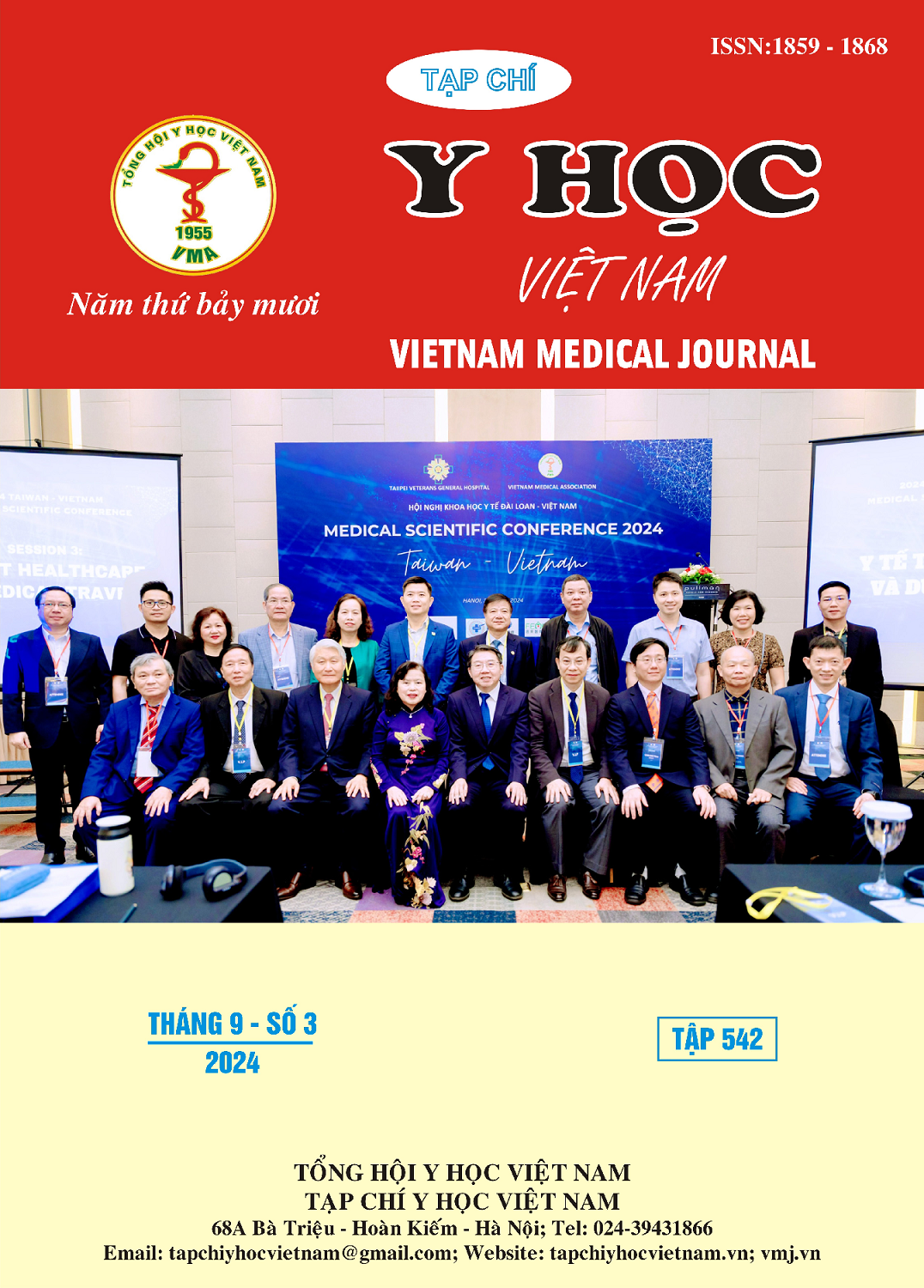STUDY ON THE INCIDENCE OF LATERAL PELVIC LYMPH NODE METASTASIS AFTER SURGICAL TREATMENT OF LOW RECTAL CANCER
Main Article Content
Abstract
Objective: To determine the rate and related factor of LPLNM after radical surgery. Subjects and Methods: We conducted a retrospective cohort study using data from 115 patients with low RC following radical treatment in University Medical Center of Ho Chi Minh city from January 2016 to May 2021. Patients were followed up and received computed tomography scan (CT scan) or pelvic magnetic resonance imaging (MRI) periodically. Diagnostic criteria for LPLNM on CT scan include short axis diameter ³ 7mm for lymph nodes along the internal iliac artery and obturator artery, or ³ 10 mm for common iliac artery and external iliac artery. Results: The average age was 56.07 (range, 27-88 years.), 60% were male. The rate of LPLNM was 10.4% during the median 28-month follow-up, accounting for 75% of PR. The most common locations for LPLNM are the internal iliac artery (45.8%) and obturator artery (33.3%). The LPLNM free survival rate at 24 months was 94,1%. Factors related to LPLNM include tumor size ≥ 30 mm (p=0,049), distance from the lower edge of the tumor to the anal verge > 70 mm (p=0,014), positive circumferential resection margin (CRM+) (p=0,007), mucinous adenocarcinoma histology type (p=0,024), pTNM stage (p=0,009), postoperative CEA level > 5 ng/ml (p=0,049), and APR surgery (p=0,005). Conclusions: LPLNM is a common site of pelvic recurrence. Patients with factors related to LPLNM need to be closely monitored and should consider early pelvic lymph node dissection surgery if metastasis is suspected during postoperative follow-up.
Article Details
Keywords
Low rectal cancer, lateral pelvic lymph node metastasis (LPLNM), pelvic recurrence, LPLNM free survival
References
2. Matsuyama T, Yamauchi S, Masuda T, et al. Treatment and subsequent prognosis in locally recurrent rectal cancer: a multicenter retrospective study of 498 patients. Int J Colorectal Dis. Jun 2021;36(6):1243-1250. doi:10.1007/s00384-021-03856-3
3. Westberg K, Palmer G, Hjern F, Johansson H, Holm T, Martling A. Management and prognosis of locally recurrent rectal cancer - A national population-based study. Eur J Surg Oncol. Jan 2018;44(1):100-107. doi:10.1016/ j.ejso.2017.11.013
4. Ogura A, Konishi T, Beets GL, et al. Lateral Nodal Features on Restaging Magnetic Resonance Imaging Associated With Lateral Local Recurrence in Low Rectal Cancer After Neoadjuvant Chemoradiotherapy or Radiotherapy. JAMA Surg. Sep 1 2019;154(9): e192172. doi:10.1001/ jamasurg.2019.2172
5. Gao X, Wang C, Yu Y, Singh D, Yang L, Zhou Z. Lateral lymph node dissection reduces local recurrence of locally advanced lower rectal cancer in the absence of preoperative neoadjuvant chemoradiotherapy: a systematic review and meta-analysis. World J Surg Oncol. Nov 23 2020; 18(1): 304. doi:10.1186/s12957-020-02078-1
6. Ogawa S, Itabashi M, Inoue Y, et al. Lateral pelvic lymph nodes for rectal cancer: A review of diagnosis and management. World J Gastrointest Oncol. Oct 15 2021; 13(10):1412-1424. doi:10. 4251/wjgo.v13.i10.1412
7. Tsukamoto S, Fujita S, Ota M, et al. Long-term follow-up of the randomized trial of mesorectal excision with or without lateral lymph node dissection in rectal cancer (JCOG0212). Br J Surg. Apr 2020;107(5): 586-594. doi:10.1002/ bjs.11513
8. Kusters M, Beets GL, van de Velde CJ, et al. A comparison between the treatment of low rectal cancer in Japan and the Netherlands, focusing on the patterns of local recurrence. Ann Surg. Feb 2009; 249(2): 229-35. doi:10.1097/ SLA.0b013e318190a664


